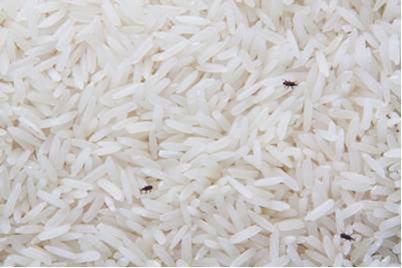Introduction
Moulds, or fungi, are known to cause food spoilage. Certain moulds can also naturally produce toxins known as mycotoxins, which are toxic to both human and animals.
This is the first of two articles that will explain further on mycotoxins found in food, and what you can do to minimise exposure to mycotoxins.
What are mycotoxins and how do they end up in our food?
Mycotoxins are toxic compounds that are naturally produced by certain types of mould that grow on cereals, dried fruits, nuts and spices. Mould growth can occur before and/or after harvest, during storage, on/in the food itself and often under warm, damp and humid conditions. Unlike mould growth, however, mycotoxins are invisible to the naked eye.
Some common types of mycotoxins found in food include:
Aflatoxins, which are commonly found in oilseeds (i.e. peanuts, sesame), cereals (i.e. corn, wheat and rice), spices and tree nuts (i.e. pistachios, almond, walnut).
Ochratoxin A, which is usually found in cereals. It has also been detected in coffee, beer, wine, nuts and dried fruit such as raisins.
Patulin, which is mainly found in rotting apples and apple products.
Some mycotoxins such as aflatoxins can also find their way into the milk, liver and kidneys of animals that have consumed contaminated feed. For example, aflatoxin M1 can be found in milk produced by cattle fed with feed containing aflatoxins.
Mycotoxins are relatively resistant to the high temperatures encountered in food processing, such as roasting, baking, and even frying. As such, they can remain in the final food products that eventually reach consumers.
People can hence be exposed to mycotoxins through eating contaminated plant products, or meat and dairy products produced from animals fed with contaminated feed.
What are the health impacts of mycotoxins?
Mycotoxins can cause a variety of adverse health effects, ranging from acute (short-term) to chronic (long-term).
Aflatoxins, particularly Aflatoxin B1, are among the most poisonous mycotoxins. Consumption of large amounts of aflatoxins can cause acute poisoning (aflatoxicosis), which is a life-threatening condition where the liver is damaged. Aflatoxins are also known to be genotoxic, meaning that it has the potential to cause cancer by damaging the genetic material in cells. Long-term exposure to low levels of aflatoxins has also been associated with liver cancer in people and animals.
What does SFA do to control the levels of mycotoxins in food?
To ensure food safety, SFA has established regulatory limits for food additives and incidental constituents (e.g. pesticide residues, mycotoxins) in food. Food manufacturers are required to comply with these stipulated regulatory limits, which SFA regularly reviews and updates.
It is also a good practice for food manufacturers to implement a Food Safety Management System (FSMS) such as, Hazard Analysis and Critical Control Point (HACCP), to identify and control food safety hazards at every stage of the food preparation.
SFA has in place a food safety regime that involves testing of food products sold in Singapore to ensure they meet our regulatory requirements, including whether regulatory limits for mycotoxins are exceeded. Food that is not compliant with SFA’s food safety standards will not be allowed for sale in Singapore.
What can we do as consumers to minimise our exposure to mycotoxins?
As mycotoxins cannot be completely destroyed by cooking, prevention is key. With aflatoxins being among the most poisonous mycotoxins, here are some ways we can reduce our exposure:
Buy reputable brands of nuts and nut butters. These products are typically the main sources of aflatoxins.
Reject any products that have unclean, opened or damaged food packaging.
Maintain good storage conditions. Nuts should be stored in a dry and cool environment before use.
Discard any foods that look mouldy, damped, shrivelled and discoloured.
Consume foods within the expiry date.



